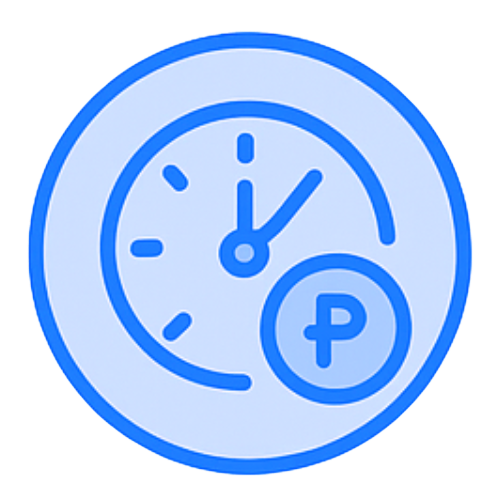Did you know that the value of PESONet transactions in the Philippines surged significantly between 2019 and 2024?
From ₱ 1.26 trillion Philippine pesos in 2019, this figure rose to approximately ₱ 10.08 trillion in 2024, highlighting the growing reliance on digital fund transfers. As this upward trend continues into 2025, PESONet remains essential to the country’s payment system. As businesses, particularly small and medium enterprises (SMEs), increasingly adopt PESONet for their financial operations, understanding its key aspects becomes essential.
What is PESONet?
Philippine Electronic Fund Transfer System and Operations Network (PESONet) is a digital fund transfer service that allows individuals and businesses to send money between banks and non-bank e-money issuers within the Philippines.
Launched in 2018 by the Bangko Sentral ng Pilipinas (BSP), PESONet is one of the key services under the BSP’s National Retail Payment System (NRPS). The goal is to reduce reliance on cash and checks by offering a safer and more efficient way to transfer money electronically.
Most commercial banks, rural banks, thrift banks, and e-wallet providers in the country are connected to PESONet. This wide network makes it a practical tool for SMEs that need to transfer larger amounts without the limitations of instant payment services.
PESONet works best for transactions as follows–
- Payroll disbursement
- Supplier or contractor payments
- Recurring business obligations
- Fund transfers between business accounts
Unlike InstaPay, which processes small-value transfers in real time, PESONet processes bulk and high-value transactions and credits them within the same banking day, depending on when the transaction is made.
How Does PESONet Work?
PESONet allows users to transfer funds between banks and e-wallets through online or mobile banking platforms. Here’s how it works.
- Initiate Transfer: Start the transaction via your bank or e-wallet's app/online portal.
- Provide Information: Enter the recipient’s information, such as the Financial institution, the Account number, and the Amount to be transferred.
- Transaction Sent to PCHC: Once you submit the transfer, your bank sends the transaction data to the Philippine Clearing House Corporation (PCHC). PCHC is the clearing switch operator that processes and matches transactions between participating institutions.
- Settlement via BSP: After clearing, the transaction moves to settlement. This step happens through the Philippine Payments and Settlement System (PhilPaSS)—a facility operated by the Bangko Sentral ng Pilipinas (BSP). Here, the funds move between the demand deposit accounts of the sending and receiving institutions.
- Recipient Credited: Based on the PESONet cut-off, the recipient’s account is credited within the same banking day.
The PESONet transfer process is straightforward. Once initiated, if submitted before the cut-off time, the funds are cleared and settled within the same banking day.
What are PESONet Cut-off Times?
PESONet cut-off times are the deadlines set by financial institutions for processing transactions within the same banking day. Transfers submitted before the cut-off are typically credited on the same day, while those made after are processed on the next business day. These cut-off times vary depending on the institution’s internal schedule.
Common Reasons for Varying Cut-Off Times
PESONet runs on multiple clearing windows throughout the day, but not all participants follow the same schedule. Each bank or e-wallet sets its timing based on internal workflows, system capacity, and how it coordinates with the clearing system. Some institutions may only process outgoing PESONet transactions once daily, while others handle them more frequently.
This means two things:
- Timing depends on your institution, not PESONet itself.
- A transaction sent late in the day might appear delayed if it misses the bank’s final submission window.
General PESONet Cut-Off Timings
PESONet transactions are processed in batch cycles during the banking day. Usually, two main clearing windows give users more opportunities to have their funds credited on the same day.
While exact schedules vary by institution, here’s how the process generally works.
- Morning Cut-Off (First Cycle): Transactions submitted before the morning cut-off are processed and credited later in the day. This typically includes transactions from the previous business day and any submitted during the early hours of the current day. These transactions are often credited early in the afternoon.
- Afternoon Cut-Off (Second Cycle): Transactions completed before the afternoon cut-off are processed in the second clearing cycle and credited by the evening.
- After Final Cut-Off: Transfers that miss the last cut-off of the day are queued for processing in the next banking day’s first clearing cycle.
Example Cut-Off Times
- Morning Cut-off: Transactions from 12:01 AM to 9:50 AM, credited after 3:00 PM.
- Afternoon Cut-off: Transactions from 9:51 AM to 3:50 PM, credited after 11:00 PM.
It’s important to remember that these times are estimates and can vary based on each institution’s internal policies. As SME businesses rely on timely payments and transfers, being aware of these deadlines helps prevent unnecessary setbacks.
Why Should SMEs Pay Attention to PESONet Cut-Off Times?
For SMEs, managing cash flow and meeting deadlines are crucial to keeping operations running smoothly. Missing PESONet cut-off times can lead to disruptions that throw off your financial planning, cause delays, and create unnecessary stress. Staying on top of these deadlines is essential to avoid these setbacks and ensure your business remains efficient and well-coordinated.
Here’s how the timing of your transactions can impact your business.
Vendor Payments Delays
If payments to vendors or suppliers are made after the cut-off time, they may not be credited until the next banking day. This could affect your supplier relationships and disrupt the timely delivery of goods or services. These delays could lead to operational setbacks for businesses that rely on tight schedules or just-in-time inventory systems.
Payroll Processing and Employee Payments
Payroll transfers made after the cut-off may not reach employees until the next business day. This can cause inconvenience for employees, especially if their pay is needed urgently. It can also lead to potential dissatisfaction or decreased morale among staff, particularly if payments are late during critical periods like holidays or end-of-month payrolls.
Cash Flow Management
Delayed transactions can affect a business's liquidity. If fund transfers intended to cover operational expenses or debt obligations are processed after the cut-off, companies might experience cash flow issues. This can cause difficulties in paying for daily operations, settling accounts, or meeting financial obligations on time.
Financial Planning and Forecasting
Without a clear understanding of cut-off times, it becomes challenging to accurately predict when funds will be available, which may affect budgeting and financial forecasting. Accurate planning is essential for managing costs, handling seasonal variations in revenue, and maintaining the necessary working capital.
By staying mindful of PESONet cut-off times, SMEs can ensure smoother financial operations and avoid unnecessary delays. With that in mind, let's explore some practical tips for managing these deadlines and making sure your transactions go through seamlessly.
Tips for SMEs to Avoid Delays with PESONet Transfers
Since you now understand the importance of mastering PESONet cut-off times, here are some practical tips to help you stay on track and avoid delays in your financial operations.
- Know Your Cut-Off Times: Different financial institutions have different cut-off schedules. Knowing the cut-off time for both sending and receiving funds is essential for avoiding delays.
- Plan for Critical Transactions: Process important transactions like payroll, vendor payments, or significant investments well before the cut-off to ensure they are completed on time.
- Consider Buffer Time: Always allow a buffer when planning payments or transfers. Submit transactions earlier in the day to avoid last-minute issues.
By staying informed and proactively managing transactions according to the PESONet cut-off times, SMEs can ensure smooth financial operations, maintain good vendor and employee relationships, and improve overall cash flow management.
While managing PESONet cut-off times is essential for smooth financial operations, n90 supports SMEs with flexible funding solutions, such as bridge loans and small business loans, to help cover cash flow gaps when transfer delays occur. Apply Now!
Final Note!
Understanding and adhering to PESONet cut-off times is crucial for small and medium enterprises to maintain smooth operations, avoid disruptions, and ensure timely financial management. By staying informed about these deadlines, SMEs can prevent payment delays, cash flow issues, and operational setbacks that could hinder business growth.
Financing options like n90 can help your SME business further simplify your financial operations and avoid potential delays caused by varying cut-off schedules.
- Automated scheduling of payments to process before cut-off times.
- Real-time tracking to monitor the status of your transactions.
- Custom alerts will be used to get notified of upcoming cut-offs.
- Integrated tools streamline payments and cash flow. They are easy to use and align with your business's specific needs.
If you want to improve your financial efficiency and avoid payment disruptions, explore how n90 can work for your business and get funded today!
FAQs
1. How can I find my bank’s PESONet cut-off times?
A: You can typically find your bank’s PESONet cut-off times on their official website or by contacting customer service. Banks also provide this information through mobile apps or online banking platforms. It's essential to check for any variations in the cut-off times, especially for specific days like holidays.
2. Can I cancel or modify a PESONet transaction after it has been submitted?
A: Once your bank has submitted and processed a PESONet transaction, it cannot be canceled or modified. You may have to initiate a new transaction if you need to make changes. It's important to double-check the transaction details before submitting.
3. Are there any additional fees for PESONet transactions processed after the cut-off time?
A: Generally, there are no additional fees for transactions that miss the cut-off time, but they may be processed on the next banking day. However, it’s always best to check with your bank as fees can vary depending on the institution and any specific terms they may have.













